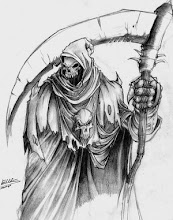Family denotes a group of people affiliated by consanguinity, affinity, or co-residence. Although the concept of consanguinity originally referred to relations by "blood," many anthropologists have argued that one must understand the notion of "blood" metaphorically, and that many societies understand 'family' through other concepts rather than through genetic distance.
Many sociologists and anthropologists believe the primary function of the family is to perpetuate society, either biologically, socially, or both. Thus, one's experience of one's family shifts over time. From the perspective of children, the family is a family of orientation: the family serves to locate children socially, and plays a major role in their enculturation and socialization. From the point of view of the parent(s), the family is a family of procreation the goal of which is to produce and enculturate and socialize children.[1] However, producing children is not the only function of the family; in societies with a sexual division of labor, marriage, and the resulting relationship between two people, is necessary for the formation of an economically productive household.
A conjugal family consists of one or more mothers and their children, and/or one or more spouses, usually husbands. The most common form of this family in the western world is regularly referred to as a nuclear family.
A consanguineal family consists of a mother and her children, and other people — usually the family of the mother, like her husband. This kind of family is common where mothers do not have the resources to rear their children on their own, and especially where property is inherited. When important property is owned by men, consanguineal families commonly consist of a husband and wife, their children and other members of the husband's family.
A matrifocal family consists of a mother and her children। Generally, these children are her biological offspring, although adoption of children is a practice in nearly every society. This kind of family is common where women have the resources to rear their children by themselves, or where men are more mobile than women.
[edit] Economic functions
Anthropologists have often supposed that the family in a traditional society forms the primary economic unit. This economic role has gradually diminished in modern times, and in societies like the United States it has become much smaller — except in certain sectors such as agriculture and in a few upper class families. In China the family as an economic unit still plays a strong role in the countryside. However, the relations between the economic role of the family, its socio-economic mode of production and cultural values remain highly complex.
Extended middle-class Midwestern U.S. family of Danish/German extraction
[edit] Political functions
On the other hand family structures or its internal relationships may affect both state and religious institutions. J.F. del Giorgio in The Oldest Europeans points out that the high status of women among the descendants of the post-glacial Paleolithic European population was coherent with the fierce love of freedom of pre-Indo-European tribes. He believes that the extraordinary respect for women in those families meant that children raised in such atmospheres tended to distrust strong, authoritarian leaders. According to del Giorgio, European democracies have their roots in those ancient ancestors.
[edit] Kinship terminology
Main article: Kinship terminology
Archaeologist Lewis Henry Morgan (1818–1881) performed the first survey of kinship terminologies in use around the world. Though much of his work is now considered dated, he argued that kinship terminologies reflect different sets of distinctions. For example, most kinship terminologies distinguish between sexes (the difference between a brother and a sister) and between generations (the difference between a child and a parent). Moreover, he argued, kinship terminologies distinguish between relatives by blood and marriage (although recently some anthropologists have argued that many societies define kinship in terms other than "blood").
Morgan made a distinction between kinship systems that use classificatory terminology and those that use descriptive terminology. Morgan's distinction is widely misunderstood, even by contemporary anthropologists. Classificatory systems are generally and erroneously understood to be those that "class together" with a single term relatives who actually do not have the same type of relationship to ego. (What defines "same type of relationship" under such definitions seems to be genealogical relationship. This is more than a bit problematic given that any genealogical description, no matter how standardized, employs words originating in a folk understanding of kinship.) What Morgan's terminology actually differentiates are those (classificatory) kinship systems that do not distinguish lineal and collateral relationships and those (descriptive) kinship systems which do. Morgan, a lawyer, came to make this distinction in an effort to understand Seneca inheritance practices. A Seneca man's effects were inherited by his sisters' children rather than by his own children.[2]
Morgan identified six basic patterns of kinship terminologies:
Hawaiian: only distinguishes relatives based upon sex and generation.
Sudanese: no two relatives share the same term.
Eskimo: in addition to distinguishing relatives based upon sex and generation, also distinguishes between lineal relatives and collateral relatives.
Iroquois: in addition to sex and generation, also distinguishes between siblings of opposite sexes in the parental generation.
Crow: a matrilineal system with some features of an Iroquois system, but with a "skewing" feature in which generation is "frozen" for some relatives.
Omaha: like a Crow system but patrilineal.
Thursday 30 October 2008
Subscribe to:
Posts (Atom)
